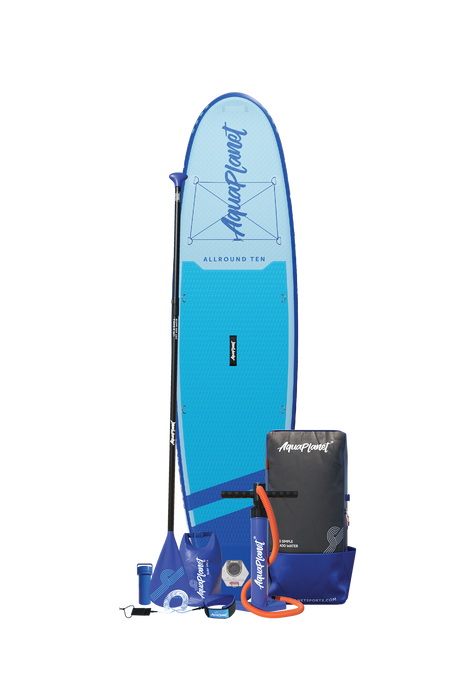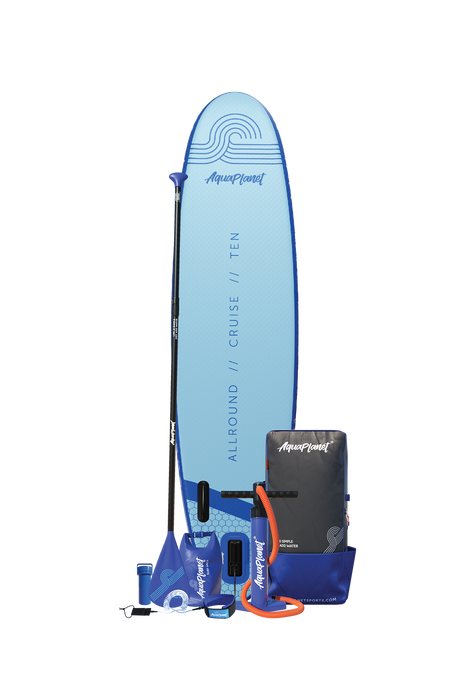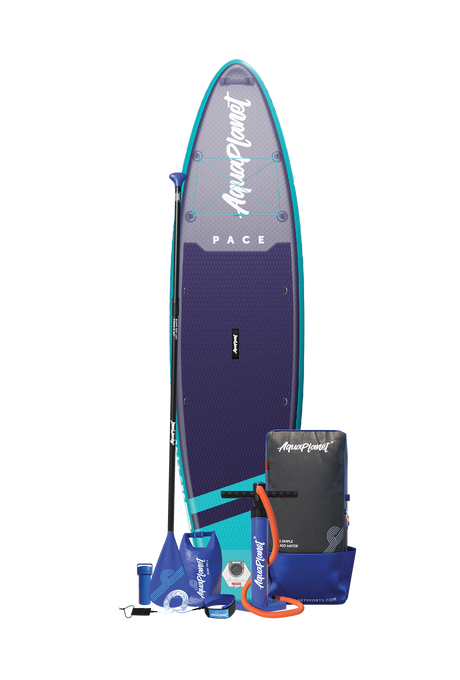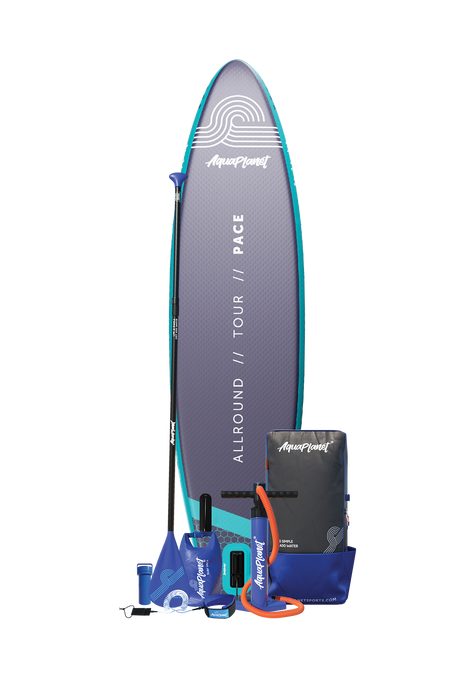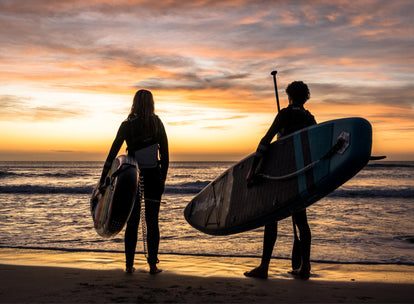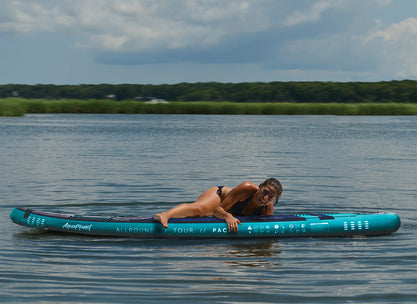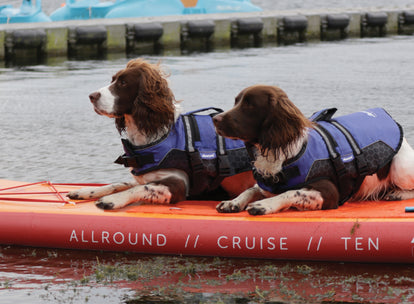There’s a time and a place for meandering down a river, or partaking in a spot of paddle board yoga. What about when you’ve got that need for speed?
Maybe you’ve decided to race on your paddle board with like-minded friends, or you want to improve your fitness with a proper SUP sweat-fest?
Whatever your reasons for wanting to go fast and furious on your paddle board, we’ve got a handful of tips that’ll get you into turbo mode in no time…

Ok, here’s the science bit.
Your paddle board technique is really just a simple physics equation: In physics, energy is expressed as force x distance. With paddle boarding, you pull your paddle a certain length with a specific force, and that’s the energy you transfer into moving.
The quicker you paddle, the quicker you’ll go. Right?
Well, sort of. Where you place your paddle and where you apply power is key.
A longer stroke works harder for you, so you’ll want to reach as far forward with your paddle as you can. Stay within a comfortable stretch, though; it shouldn’t actually feel hard to reach.
Bring your paddle up before it passes your feet. If you don’t, the blade will be at an angle, and you’ll end up digging yourself down in the water, as well as causing potential balance issues.
Keep all your muscles working aerobically. You don’t want to work too hard (unless you’re racing over the finish line, of course!).
And don’t forget: good, proper strokes will have you going faster and will expend less energy than lots of bad ones.
Now let’s talk about the backstroke. Many how-to guides will discuss where to plunge your paddle and where to bring it up. But how do you move your paddle after you take it out of the water but before you plunge it back in?
It’s simple: move the paddle blade in a straight line forward. Don’t wave it in or out, just move it the shortest path between the two points. It’ll help with shoulder pain too!

If you want to paddle fast, your whole body needs to work as one, with each part taking on a specific role.
Believe it or not, your arms aren’t what drives you forward. Actually, they transfer the force from your more powerful muscle groups. Keeping your bottom arm straight is key and will prevent you from using your arm power.
Your top arms should bend so you can reach further. Try to loosen up your arms rather than make them go all stiff and mechanical. No white knuckles!
Keep your shoulders relaxed and down too (locking them leads to overworking your arms) and open up your chest - your top shoulder should roll forward while your bottom should roll back.
As Shakira says, the hips don’t lie! They’re the hinges that keep everything working as one, helping you balance and propel forwards with each stroke; keep them directly above your feet rather than sticking them out or rotating them too much when you reach with your paddle.
Knees act as your suspension on rougher waters - keep them slightly bent and positioned right over your feet. And finally, your feet. Keep them at shoulder width and angled slightly outwards (around 15 degrees) to stabilise you. Try not to shift your weight from foot to foot and keep an even distribution.

When it comes to speed, not all paddle boards are the same. If you’re keen to go faster, it’s worth investing in a board specifically designed for racing.
With its signature pointed shape, the 10’6” Pace is known for its speed and balance, and is faster than our best-selling Max. Speed on a budget!
The Cuda is by far our fastest board - ideal for those looking to invest in a board built for super-cruising. A long tapered bow with gentle nose rocker delivers great glide, so the energy from every stroke goes further.
Finally, the eye-catching Hurley ApexTour Shock Wave board - it’s a beauty, and is designed for stability and cruising speed.
Now all you need to do is get practising, stay safe and have fun!

